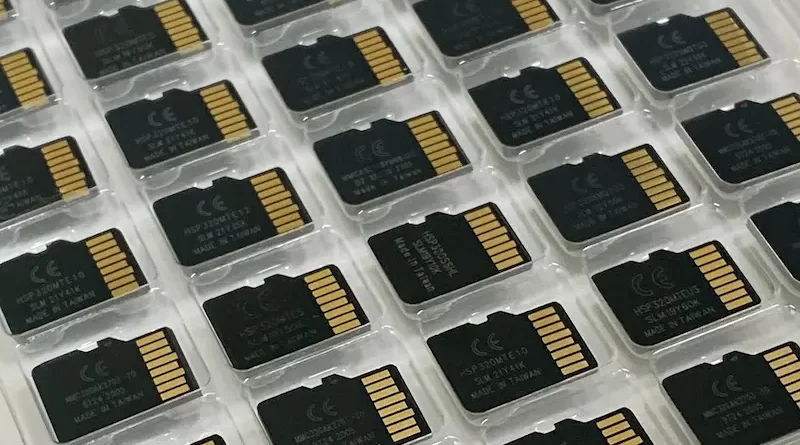Reading And Writing CID Values To MicroSD Cards
There is a bit of mystery around the reading and writing of CID values to microSD memory cards. A lot of theories out on the web, but not a lot of straightforward answers. This article provides a high-level overview of the process of reading and writing CID values from Secure Digital memory cards.
A CID number, also known as a Card ID number, is a unique identifier assigned to Secure Digital memory cards. It is written into the card’s read-only memory and is used to track the card’s usage and performance. The CID is typically a 16-digit number and is unique to each card. It can be used to identify the card, check its authenticity, and track its performance.
Speaking of authenticity and the importance of originality, this is a principle that applies not just to technology but also to academic pursuits. It’s crucial to ensure the authenticity of your work, whether it’s programming a CID or writing an academic paper. If you’re struggling with your academic workload, there are services where you can pay for homework on writepaperfor.me help to ensure your work remains original and high-quality.
Now, back to our main topic – writing the CID value. This is a step in the manufacturing process and is done at the stage in which a card is being created. The CID value is written into Read Only Memory (ROM) and cannot be modified, duplicated, or changed by the typical user. However, there might be situations where a content owner would like to modify the CID values to meet their own IP (Intellectual Property) specifications and there is a method in being able to do this.
The CID value can be used for programming. The CID number is a unique identifier for the memory card and can be used to identify the card, check its authenticity, and track its performance. Additionally, the CID number can be used to verify the origin and authenticity of the card and the data residing on the memory card. The CID is also a method to ensure that a card has not been tampered with or modified. Additionally, the CID number can be used in combination with other data stored on the card to create a signature that can be used to verify the validity of the card’s contents.
To modify the CID value of a microSD card might be required because the content owner needs to validate the content information. Some companies use defined IP methods and strategies to control their content and the default CID value from a card manufacturer might not meet the company’s specification. With that in mind, it would be required to modify the CID value to bring the card specification into accordance with company strategies. Taking control of the CID value is possible through a combination of appropriate Secure Digital card media in conjunction with the correct microSD card duplicator equipment. Nexcopy offers such equipment for both SD card duplication and microSD card duplication with software solutions to control descriptor field values (CID values).
The Nexcopy equipment allows for the owner to write unique CID values in bulk to each card from a source text file. The source text file must have CID values configured in the appropriate format in order for the write sequence to take place. In addition, the Nexcopy equipment has the ability to read CID values in bulk and export those values to a .csv file which can be used for programming and authentication.
One additional feature of the Nexcopy microSD card duplicator is the ability to write protect the microSD card media. Typically, the memory space of SD cards will be read and write; however, the can set the device to be read-only making everything on the card permanent with no ability for anyone to modify, change, delete or alter the digital files on the microSD card.
Copying the CID value of a Secure Digital card can be illegal, as it is a violation of copyright and intellectual property laws. Additionally, it can be considered fraud or illegal cloning, as it would allow someone to produce counterfeit cards or use a card without the proper owner’s permission. The Digital Millennium Copyright Act (DMCA) is a United States law that prohibits the manufacture or distribution of technology used to circumvent copyright protection measures. This law could be used to prosecute anyone who attempts to copy the CID value of a Secure Digital card.
Although it is against the law to copy the CID value of any card, there are products available for IP owners (Intellectual Property owners) to read and write their own CID values to protect their digital content from illegal pirating. Providing production equipment with the capability to write the CID value is not against the law, as long as the end-user is aware that it is up to them to use the equipment responsibly and in accordance with applicable laws and regulations. Copying the CID value of a Secure Digital card is a violation of copyright and intellectual property laws, and it can be considered fraud or illegal cloning. Therefore, it is important that the end-user is aware of the potential legal consequences of using the equipment in an inappropriate manner.
The 16 hexadecimal digits of the CID value of a card have specific meanings. The first four digits represent the manufacturer’s ID, the next four represent the card’s serial number, the next four represent the card’s model number, and the last four represent the date of manufacture. All of the 16 hexadecimal values can be modified using the Nexcopy memory card and duplicator solution.

